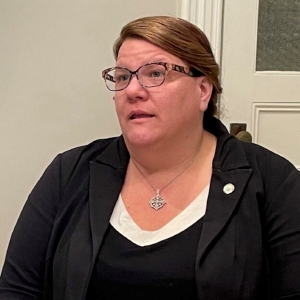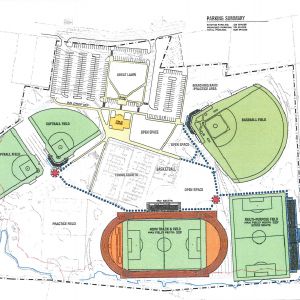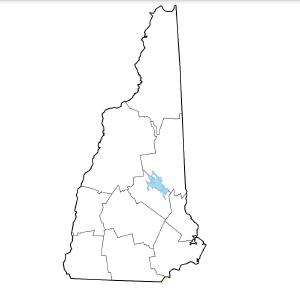FBI alert in Murray case came at request of AG
| Published: 01-25-2022 5:41 PM |
It was at the request of the New Hampshire Office of Attorney General that Maura Murray, a University of Massachusetts student who’s been missing since 2004, was added to the FBI ViCAP registry last week.
The FBI Violent Criminal Apprehension Profile’s purpose is to share information with law enforcement across the country to track and apprehend “violent serial offenders,” according to the U.S. Department of Justice. Local law enforcement can request missing people, among other potential victims, be added to the base.
“[ViCAP] is simply another investigative avenue being used in the case,” NH Senior Assistant Attorney General Jeffery Strelzin told Manchester InkLink. “Like all investigative avenues, the hope is that it may lead to useful information in the case.”
Murray’s family was notified by a victim-witness advocate of the AG’s office last week, Strelzin said.
Murray disappeared after crashing her car on Route 112 in North Haverhill Feb. 9, 2004. Extensive investigation by local and state law enforcement in the years since have turned up scant information about what may have happened to her.
Julie Murray, who publicly represents the family, said in television interviews last week that when she was notified about the ViCAP alert, she wasn’t told why the alert was issued now, nearly 18 years after her sister disappeared.
“I hope it’s because there’s new information,” she said in a News Nation interview. “But I think it’s because law enforcement has exhausted all their sources that they have available, and this is a very powerful database they can use to track and correlate information.”
The purpose of ViCAP is to largely help find people who may be victims of a crime as well as find patterns that will lead to nailing down serial criminals. The U.S. Department of Justice website explains that crime analysts, specially trained to study the database with the goal of identifying serial offenders, “have developed timelines on potential highway serial killer suspects.”
Article continues after...
Yesterday's Most Read Articles
 By all appearances, Canadians are leery of coming to NH
By all appearances, Canadians are leery of coming to NH
 As Canadian travel to the U.S. falls, North Country businesses are eyeing this Victoria Day weekend to predict impacts in New Hampshire
As Canadian travel to the U.S. falls, North Country businesses are eyeing this Victoria Day weekend to predict impacts in New Hampshire
 Catherine Masterson named next superintendent of Merrimack Valley and Andover starting in 2026
Catherine Masterson named next superintendent of Merrimack Valley and Andover starting in 2026
 “A dream come true” – Family opens housing for adults with disabilities in Concord
“A dream come true” – Family opens housing for adults with disabilities in Concord
 Helen Hanks resigns as Department of Corrections commissioner
Helen Hanks resigns as Department of Corrections commissioner
 ‘I thought we had some more time’ – Coping with the murder-suicide of a young Pembroke mother and son
‘I thought we had some more time’ – Coping with the murder-suicide of a young Pembroke mother and son
Law enforcement agencies nationwide have been asked to forward information about cases meeting “highway serial killings criteria,” including kidnapped or missing persons whose last known location was along a highway. ViCAP was created in 2009 as part of the FBI’s Highway Serial Killer Initiative. By 2019, the FBI had included more than 750 victims in its database, and identified more than 450 possible predators.
Strelzin’s office has been investigating Murray’s disappearance since shortly after her disappearance. “We don’t know if Maura is a victim, but the state is treating it as a potential homicide,” he told Nancy West, of the New Hampshire Union Leader, in 2007. “It may be a missing-persons case, but it’s being handled as a criminal investigation.”
The FBI was briefly involved in the investigation shortly after Murray disappeared, interviewing people in Massachusetts who knew her. Her disappearance is officially labeled as “suspicious” and was added to the state’s cold case investigations unit in 2009.
18 years, no answers
Murray, 21, disappeared just after 7:30 p.m. Feb. 9, 2004, on Route 112 in Haverhill. She’d driven her car into a snowbank after a sharp turn right after the intersection with Old Peters Road on the two-lane that’s also Old Ammonoosuc Road, in North Haverhill. In the 20 minutes between when she declined help from someone driving by and when a Grafton County Sheriff Department deputy arrived, she was gone, taking her backpack and leaving her locked car, damaged from the crash.
Her disappearance caught the imagination of the internet, and over the years theories among bloggers and amateur web sleuths have ranged widely and wildly, fueled by the fact that she hadn’t confided in anyone when she left her dorm at the University of Massachusetts in Amherst
Before Murray left Amherst that afternoon, she called vacation accommodations in Vermont, as well as sought information on a condominium rental in Bartlett, an area she’d spent a lot of time with her family. She didn’t make any reservations over the phone, though.
Her father, Fred Murray, told WMUR in 2014 that he was sure his daughter, a Massachusetts native, was on her way to Bartlett, which would have involved taking Route 112. “She knows it like her backyard,” he said. “We were in New Hampshire so much, at least four times a year. She was up there every year of her life.”
Julie Murray reiterated in TV interviews last week that her family believes Maura was looking for a break, to get away briefly from her stressful life as a nursing student, possibly in Bartlett. She’d brought textbooks and schoolwork with her on the trip. The family over the years has rejected the theory that Murray died by suicide, and law enforcement has said if that had happened, her body likely would’ve been found.
After extensive searches of the woods near around where Murray left her car turned up no clues, the most logical theory is that she was picked up by a predator, either a local person or someone driving through.
The last time the NH AG’s office reported a potential development in the case was April 2019, when a house near where Murray was last seen was searched. Nothing was turned up in the search.
The case also made news In September, when human bone fragments were found on Loon Mountain, about 20 miles east on Route 112. Those fragments turned out not to be Murray’s, and are likely more than a century old.
The spot where Murray crashed had become a nuisance site, and the owners of the property in the past couple of years removed the grove of trees lining the road where people frequently tied blue ribbons to mark the site. After the trees were removed, a group petitioned to get a historical marker placed at the site, but the petition was denied last March by the state Department of Transportation.
These articles are being shared by partners in The Granite State News Collaborative. For more information visit collaborativenh.org.]]>







 Plans advance on $27M Memorial Field project
Plans advance on $27M Memorial Field project  Drought is completely gone from New Hampshire – maybe it can stop raining now?
Drought is completely gone from New Hampshire – maybe it can stop raining now? Concord businesses receive grants to build self-sufficiency
Concord businesses receive grants to build self-sufficiency A soggy spring continues
A soggy spring continues
